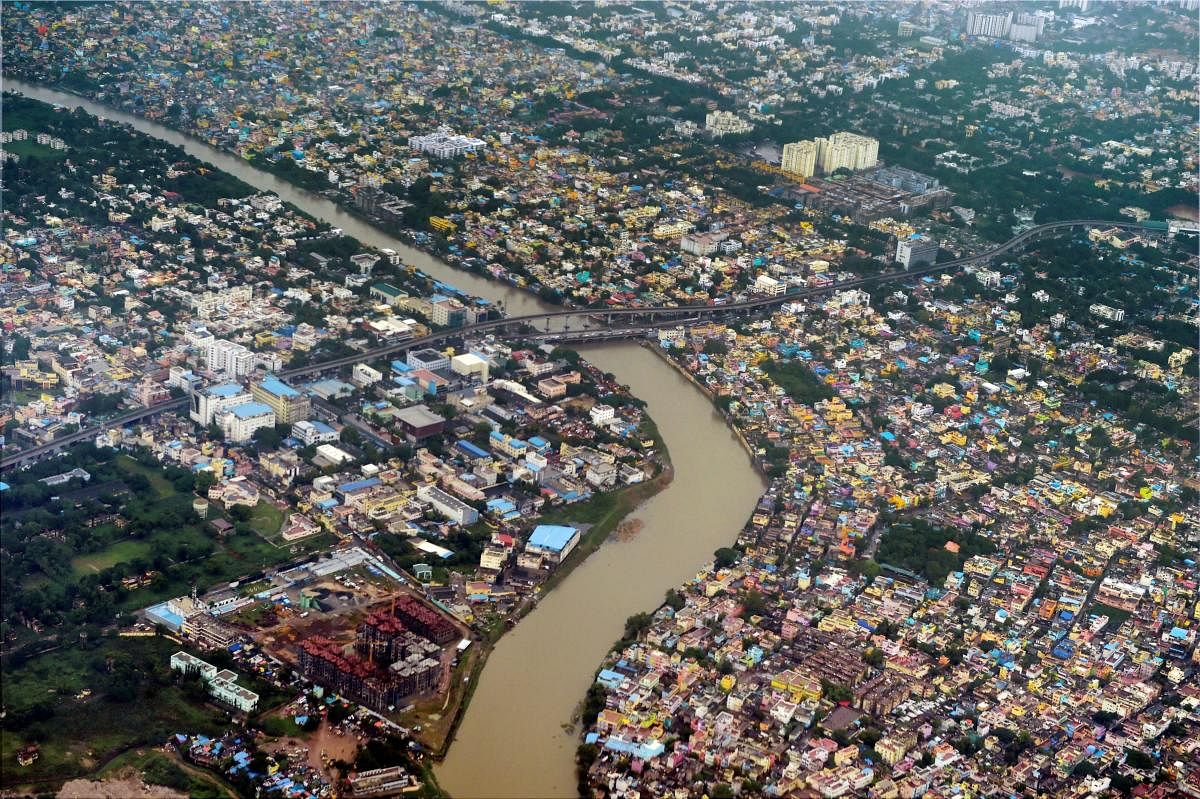
The memories of the 2015 floods haunt Chennai residents every time they welcome the North-East monsoon. The question on everyone’s mind is whether the city is prepared for another flood. The answer is ‘No’.
While a few loopholes have been plugged by the Greater Chennai Corporation (GCC), like reducing water-logging at many areas, activists and residents say unscientific planning of stormwater drains, non-restoration of waterbodies in and around the city, and non-maintenance of recharge wells and rainwater harvesting infrastructure are some of the issues that still plague the city.
A parliamentary committee report said that drainage congestion, encroachments in lakes and river channels, and large releases from storage reservoirs like Chembarambakkam were responsible for the floods, which left over 300 people dead and caused damages between Rs 50,000 to 1 lakh crore.
The GCC says it has taken steps to construct new stormwater drains and repair the existing ones for a length of 196 km, removed encroachments on water channels, and has reduced the number of localities where water stagnate from 306 to 19.
Efforts have also been taken to construct stormwater drains on the outskirts of the city, it said.
However, the civic body’s claims stood exposed in October, when the North-East monsoon arrived in the city.
Unscientific construction
“There is not much of a change from 2015 to 2020. The biggest problem is the unscientific way of constructing the stormwater drains across the city. Instead of alleviating the problem, these structures aggravate them. Above all, the poor handling of macro and micro water harvesting structures shows the civic body has no proper plan to prevent flooding,” Jayaram Venkatesan of Arappor Iyakkam, an NGO, told DH.
Venkatesan, whose NGO has been at the forefront of raising issues that concern the city, also found fault with the GCC for constructing stormwater drains on the East Coast Road (ECR), a region which does not see the problem of water stagnation.
Also Read | Hyderabad floods: A disaster years in the making
Venkatesan also says the GCC should account for all the water Chennai receives each year and how much is recharged, stored and released to the sea. “We have enough infrastructure to save rainwater. Are these being maintained properly? We need an answer” he said.
In 2019, the city faced its worst-ever water crisis in decades, forcing the government to bring Cauvery water from Vellore district through train wagons.
Good rains and the arrival of the Krishna water averted the crisis this year.
Activists and residents want the civic body to keep its rainwater harvesting infrastructure ready to conserve water. “People should also conserve rainwater as only the government cannot do everything,” another activist said.